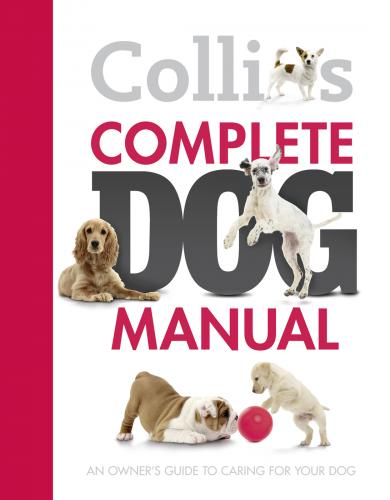History
There is no doubt that this dog’s ancestors were giant war dogs from Asia Minor known as Allens. They probably originated from ancient Egypt. They were used as war dogs by Attila the Hun and fought wild animals in Rome’s Colosseum. The modern dog was developed in the 1500s in Germany for hunting wild boar. A pack owned by Earl Philip of Hessen killed 2,572 boar in 1563. From about 1882, when the Breed Club was formed, the breed changed course and became a pet and guard dog.
Description
A majestic dog, the Great Dane has a soft expression and an athletic body with a look of ‘dash and daring’. Colours range from brindle with stripes to fawn-light to dark, blue-light to dark slate, black or harlequin with black or blue patches which appear torn. Friendly, outgoing, favours children – a deeply affectionate big dog, loyal and caring for his family.
Fact File
Group: Working
Country of Origin: Germany
Male:
Min. 76 cm (30 in)
Female:
Min. 76 cm (30 in)
Coat: These dogs moult freely and have a double coat.
Life Expectancy: 6–8 years
Guarding Instinct: Suspicious nature, will guard owners.
Temperament & Grooming
Temperament: It is a courageous, devoted but sensitive breed, belying its bloodthirsty past. Never play fight with this breed.
Grooming: A weekly good brushing will keep the dog’s coat lustrous; the ears need cleaning at the same time.
Exercise & Feeding
Exercise: These dogs need only some gentle exercise when young, which can be built up gradually over time to develop their muscular, athletic body. A fully grown adult Great Dane will demand plenty of walks and free running.
Feeding: There are no special feeding requirements.
Health Problems
Hip dysplasia, elbow dysplasia (see here), bloat and eye problems, which are under investigation.
(Vera Zinkova)
(Nikolai Tsvetkov)
(Liliya Kulianionak)
Parson Jack Russell Terrier
Highly intelligent, the busy Jack Russell is always doing things and is very affectionate as well as being a good guard – ever alert and watchful. Their wonderful friendly nature blossoms within a happy family and they are very patient with children. Ideal for the dynamic country family.
History
Parson Jack Russell was born in Devon in 1795, took a good degree at Oxford and was ordained in 1819. It was while he was up at Oxford that he acquired the terrier bitch that was to be the foundation of the breed that was named after him. While strolling in Magdalen Meadow one day he met the local milkman and saw, for the first time, the terrier named Trump. He did not move until he had persuaded the milkman to part with her. The parson died at eighty-four, still in the saddle, his breed of dogs a fitting memorial.
Description
A small athletic dog, it is full of vitality, slightly longer than its height at the shoulders. The wiry or smooth coat is mostly white with black and/or tan patches. Note that the long-legged Parson Jack Russell should not be confused with the smaller-legged Jack Russell terrier. This dog has courage without recklessness coupled with stamina. It is also one of the great ratters, with razor-sharp reactions. Ever vigilant, the Jack Russell’s keen senses will flush out small prey, such as rats and mice. This is an easily-trained, fun dog that is into everything.
Fact File
Group: Terrier
Country of Origin: England
Male:
35 cm (14 in)
Female:
33 cm (13 in)
Coat: There are two distinct types: the smooth variety and the rough coat.
Life Expectancy: 13–15 years
Guarding Instinct: A very watchful dog; intruders beware.
Temperament & Grooming
Temperament: Happy-go-lucky fun dog, very intelligent and trainable.
Grooming: The smooth variety requires only a weekly brush whereas the rough coat needs hand stripping or trimming every four to five months as well as weekly brushing.
Exercise & Feeding
Exercise: Basically, this is a country dog needing plenty of exercise and mental stimulation. The long-legged Parson Jack Russell loves to be hunting outside.
Feeding: There are no special feeding requirements.
Health Problems
A generally healthy breed but buy from eye-tested parents.
West Highland White Terrier
Feisty, stubborn, friendly, playful and affectionate, the Westie is a bright pet for town or country. A clean and biddable terrier. A fun dog that one minute will be digging up your flower beds while hunting non-existent moles and the next minute will be lying on your lap with all the love of a spaniel. A family dog full of zest.
History
Up to the mid-1800s the terriers of Scotland were a nondescript mixed lot that kept down the rats and foxes on the small crofts. As foxhunting became fashionable, gentlemen began taking notice of terriers but white dogs were not liked. However, a Colonel Edward Malcolm, thinking one of his own brown terriers was a fox as it emerged from an earth, accidentally shot it, and from then on he developed this unmistakable white terrier and was the breed club’s first chairman in 1906.
Description
A short-legged, square dog with a profuse wiry white coat that needs careful attention in order to maintain the typical shape. The head should be slightly domed with very dark eyes. The Westie was used as an all-purpose worker that was kept as a ‘vermin’ killer and taken out to hunt
